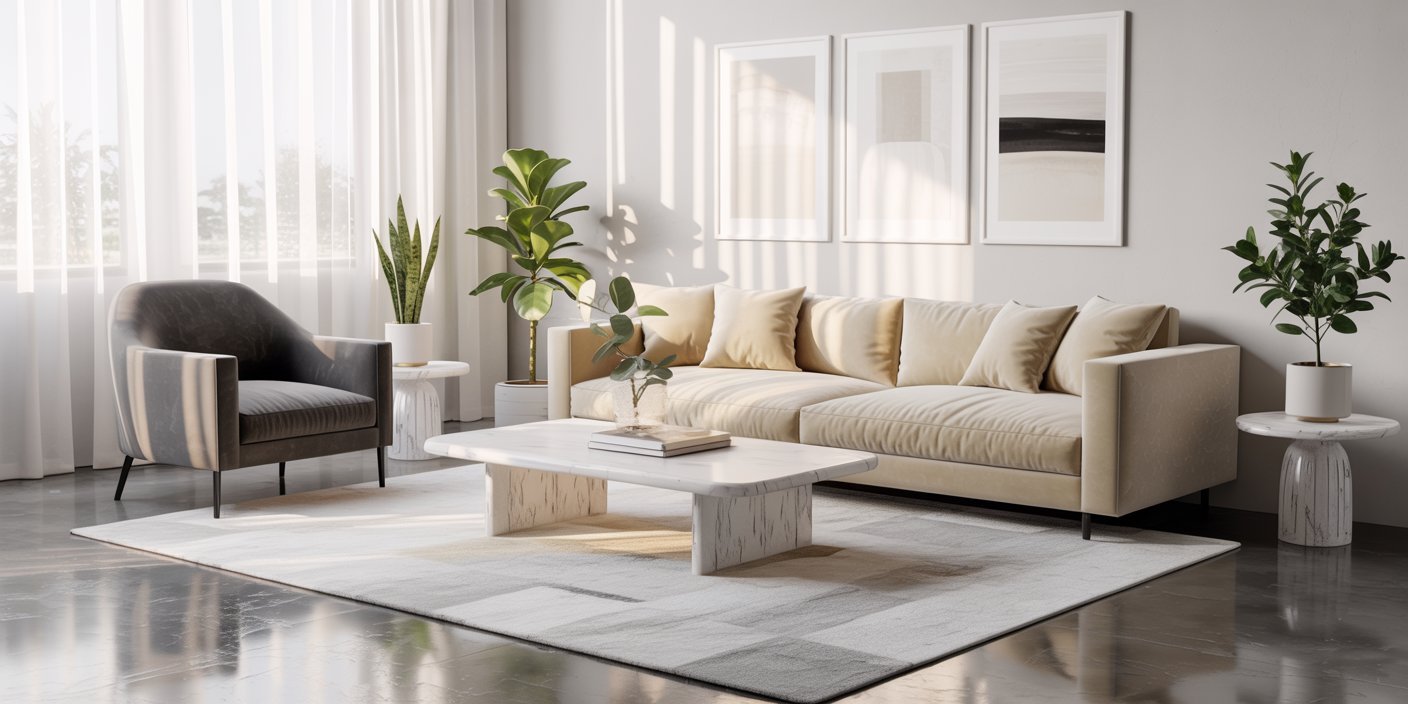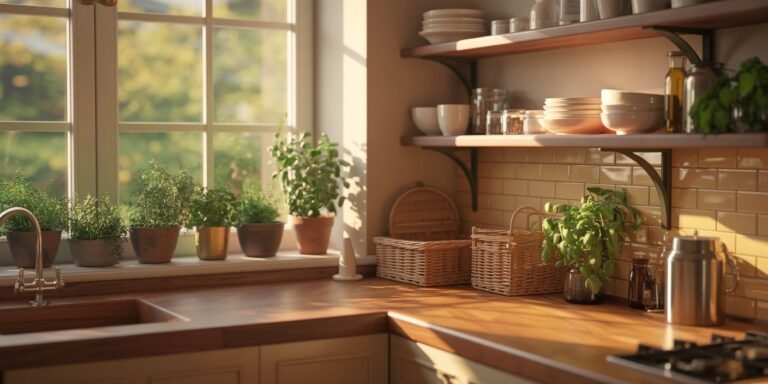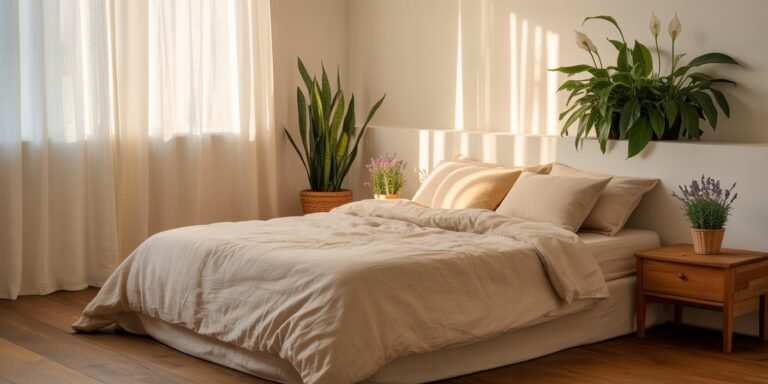When I first heard the term “quiet luxury”, I imagined spaces that exude sophistication, timeless elegance, and subtle refinement, all without needing flashy decorations or designer labels.
It’s that feeling you get when a room looks effortlessly polished — every piece seems carefully selected, and nothing feels out of place.
At first, I assumed this level of style required a high-end budget, designer furniture, and expensive fabrics.
But over time, I learned that quiet luxury isn’t about spending more; it’s about being intentional with choices, investing in a few quality pieces, and using smart styling tricks to make your home feel calm, curated, and elevated.
I began experimenting in my own apartment. I swapped mismatched furniture for clean-lined pieces, layered soft textures, and carefully chose accents that felt luxurious without costing a fortune.
I even repurposed thrifted items — like a vintage side table I painted to look like polished walnut, or a second-hand mirror I gave new life with a subtle gilded finish.
The transformation was incredible. The rooms felt larger, brighter, and more inviting, and friends kept asking how I achieved such a high-end look on a limited budget.
Quiet luxury is really about subtlety, balance, and mindfulness in your design choices — it’s the art of making your home feel rich in style without being ostentatious.
In this post, I’ll share my approach to creating quiet luxury interiors on a budget. I’ll cover everything from color palettes and textures to furniture choices and small accents that make a big impact.
By the end, you’ll have a roadmap to elevate your home decor, create serene spaces, and make your home feel luxurious — all without breaking the bank.
1. Neutral Palettes — Calm, Sophisticated, and Timeless
A quiet luxury home starts with a thoughtful, neutral color palette. Neutral tones provide a calm backdrop that allows furniture, textures, and decorative accents to shine.
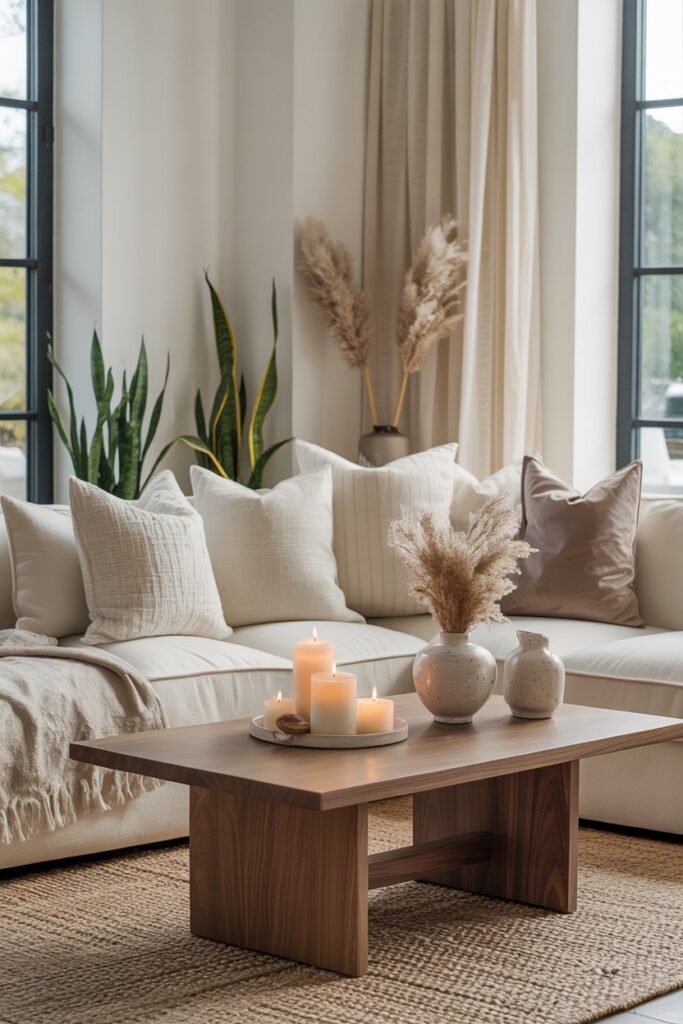
When I first repainted my living room in soft beige and warm gray tones, the transformation was immediate: the space felt airy, cohesive, and much more elegant.
How to Style It
- Begin with neutral walls — whites, creams, soft taupes, and muted grays are ideal. These colors create a timeless base and make layering textures and accents easier.
- Layer different shades of the same color to add depth — for example, a beige wall with slightly darker tan cushions and a cream rug adds visual interest without being loud.
- Mix subtle accent materials, such as wood, stone, or brushed metal, to break up monotony and add a refined feel.
Pro Tips
- Avoid overly bold colors that can clash with subtle furnishings. Quiet luxury thrives on harmony and understated elegance.
- In smaller rooms, lighter neutrals make the space feel larger and more open.
- Use soft accent colors sparingly — a muted blush throw or dusty green vase can add a touch of personality without stealing the show.
Extra Insight: I often buy budget-friendly neutral basics like lamps, side tables, and cushions, then elevate them with a coat of paint, elegant fabric covers, or new hardware.
Small upgrades like these instantly give an affordable piece a luxurious feel.
2. Textures and Materials — Subtle Luxury Without High Cost
In quiet luxury, texture is key. Even budget-friendly items can feel expensive when paired with the right mix of materials.

I learned this the hard way: a plain sofa suddenly looked sophisticated when I added a boucle throw, velvet cushions, and a soft wool rug.
The textures made the room feel curated and thoughtfully designed.
How to Style It
- Combine soft fabrics like linen, velvet, and cotton with harder textures such as wood, metal, and stone. This contrast creates a luxury feel without the price tag.
- Introduce natural textures wherever possible — rattan baskets, woven rugs, and ceramic vases give an organic, polished touch.
- Highlight one or two statement pieces with richer textures, like a velvet ottoman or a faux marble side table, to anchor the space.
Pro Tips
- Layering is everything. Don’t just place a single throw on a sofa; fold one blanket, add two cushions, and drape a rug for depth and warmth.
- Mix textures subtly — for example, a linen pillow on a leather chair or a wool rug on a wooden floor adds dimension and understated elegance.
- Faux finishes can be very effective if realistic — faux marble or metallic accents can mimic high-end luxury for a fraction of the cost.
Extra Insight: I once transformed a $50 side table with a coat of metallic spray paint and a marble contact paper top.
It looked like a designer piece, proving that budget items can feel high-end with thoughtful styling.
3. Minimalist Furniture Choices — Understated Elegance
Quiet luxury thrives on intentional furniture selection. Less really is more. I replaced a bulky, ornate sofa with a clean-lined, neutral sectional, and immediately the room felt calmer, brighter, and more elegant.
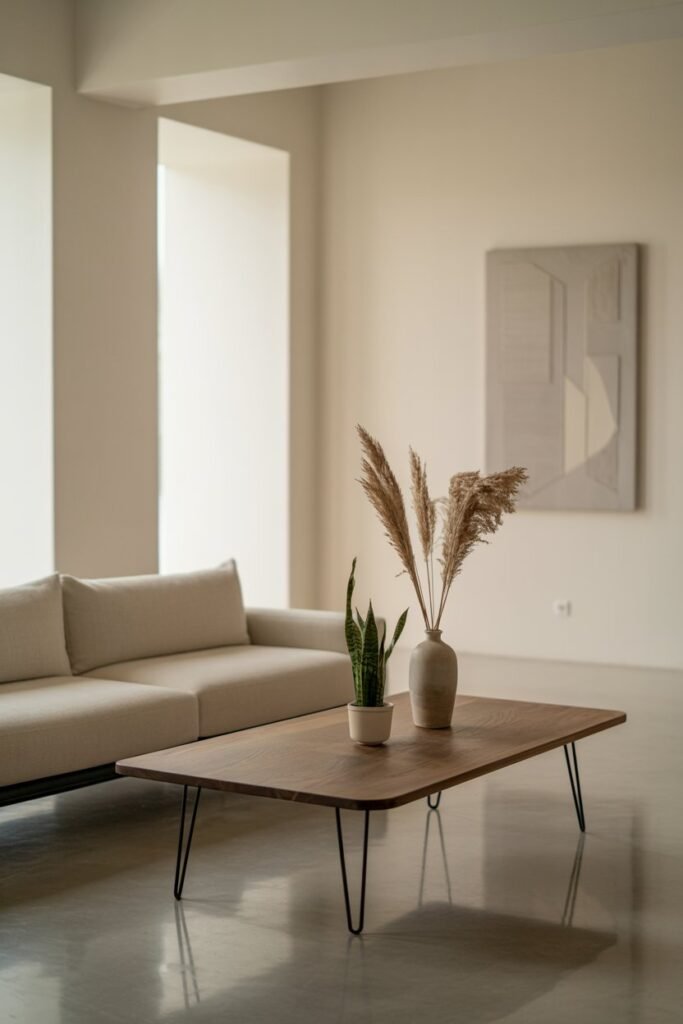
Minimalist furniture provides a foundation for a serene and sophisticated space, allowing other elements like textures and accents to shine.
How to Style It
- Stick to simple, timeless silhouettes in chairs, tables, and sofas. Clean lines and subtle curves feel high-end without being flashy.
- Choose versatile pieces that can mix with multiple styles — for example, a neutral sofa works with modern, bohemian, or even farmhouse accents.
- Keep furniture proportional to the room — oversized items make spaces feel cluttered, while small, delicate pieces can get lost.
Pro Tips
- Layer in affordable pieces with one or two premium items — for example, a budget couch can be paired with a designer-inspired side table.
- Use throws, cushions, and rugs to elevate minimalist furniture, adding warmth and texture.
- Focus on furniture placement and flow — symmetry and space between pieces create a calm, intentional atmosphere.
Extra Insight: I once combined a second-hand dining table with elegant chairs from a discount retailer.
The mix of budget and elevated pieces instantly gave the room a quiet luxury vibe. It’s all about curation and contrast.
4. Lighting & Hardware — Subtle Details That Elevate a Space
Quiet luxury is in the details. One of the most overlooked ways to elevate a home is through lighting and hardware.
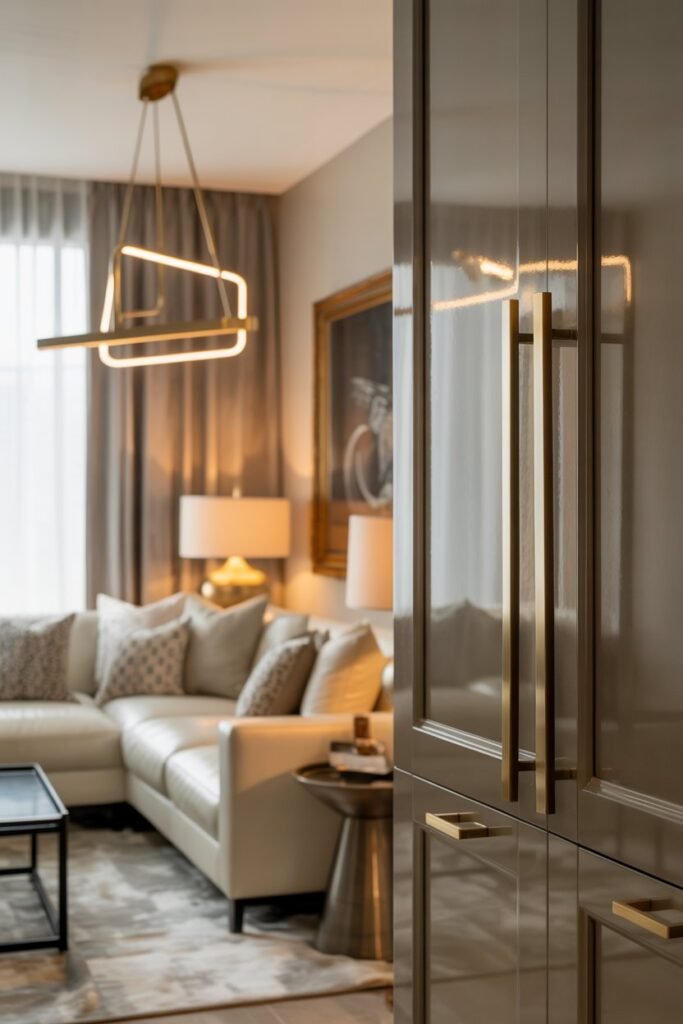
When I replaced old, generic light fixtures with sleek, modern designs in brushed brass and added dimmable bulbs, my space immediately felt more curated and sophisticated.
How to Style It
- Swap outdated fixtures for simple yet elegant lighting — pendant lights, floor lamps, or wall sconces with clean lines work best.
- Use dimmable lights or multiple light sources to create a soft, layered glow in each room.
- Upgrade cabinet handles, drawer pulls, and door hardware to brushed metals or matte finishes for a subtle, luxurious touch.
Pro Tips
- Even affordable lighting fixtures can feel high-end if the style is modern and cohesive.
- Use warm lighting rather than harsh white light to enhance comfort and sophistication.
- Consistency matters — match hardware finishes across the room to maintain a polished look.
Extra Insight: I once swapped out $10 drawer pulls for matte gold handles across my kitchen.
Guests and friends commented on how “thoughtful” and “luxurious” the small upgrade felt — proving small details create a big impact.
5. Artwork & Wall Styling — Curated, Intentional, and Impactful
The walls in a quiet luxury home should enhance the space without overpowering it.
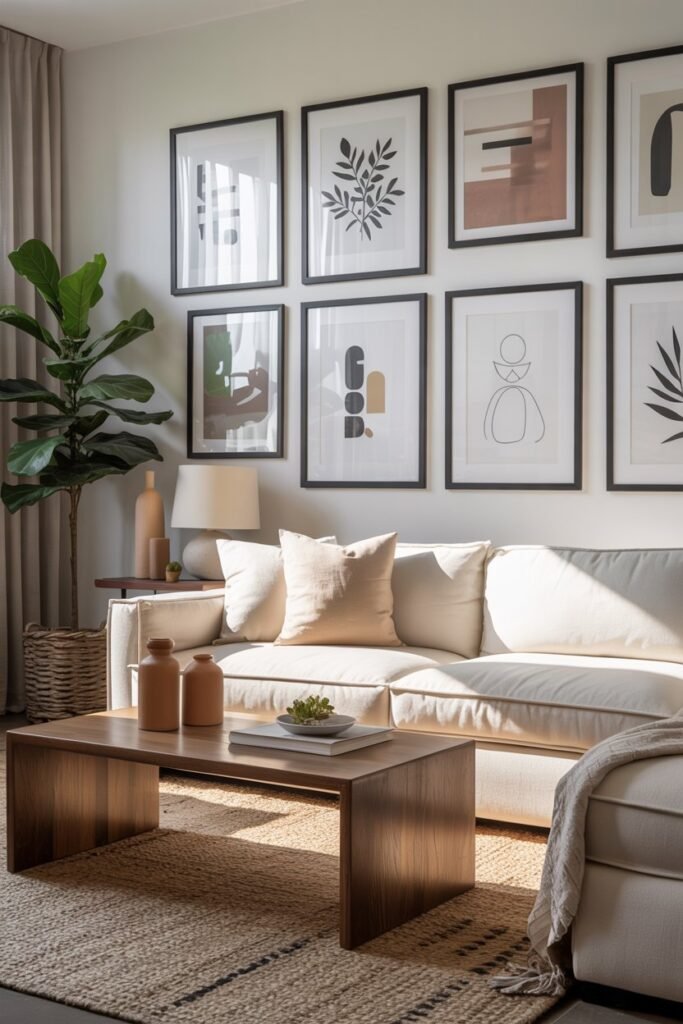
I began curating my own gallery wall using a mix of budget-friendly prints, DIY frames, and a few statement pieces, and it transformed my living room into a space that felt carefully designed.
How to Style It
- Stick to simple frames and muted tones for a clean, cohesive look.
- Use one or two larger statement pieces instead of cluttering the walls with small prints.
- Consider 3D wall art or textured panels to add subtle luxury without taking up floor space.
Pro Tips
- Create visual balance — don’t overcrowd one wall while leaving another empty.
- DIY or print your own artwork — you can find high-quality, affordable prints online that look like gallery pieces.
- Rotate art seasonally to keep the room feeling fresh and intentionally designed.
Extra Insight: A framed vintage map I sourced cheaply instantly elevated a corner of my office.
Guests frequently commented on how “sophisticated and personal” it felt — a reminder that thoughtful artwork adds quiet luxury.
6. Greenery & Natural Elements — Bringing Life to Your Space
Adding plants and natural elements is a simple, budget-friendly way to inject life and refinement into a room.

I started with a few small potted plants on shelves and a larger floor plant in the living room corner.
The difference was striking — the space felt calm, balanced, and thoughtfully designed.
How to Style It
- Mix small tabletop plants and larger floor plants to create layers and depth.
- Use decorative pots in muted, elegant tones like matte white, soft gray, or terracotta.
- Incorporate natural materials like wood trays, woven baskets, or stone coasters to enhance a refined, organic feel.
Pro Tips
- Even faux plants can look luxurious if placed thoughtfully and paired with clean-lined pots.
- Group plants in odd numbers (3 or 5) for a more visually appealing display.
- Combine plants with natural light for a serene and inviting atmosphere.
Extra Insight: I added a single fiddle leaf fig to a corner of my living room. It cost under $50, but it instantly made the space feel like a high-end designer home. Quiet luxury is often about the perception of quality and care, not expense.
7. Personal Touches & Budget-Friendly Upgrades — Subtle Sophistication
Quiet luxury isn’t about impersonality — it’s about adding small, thoughtful touches that make your home feel curated. I like to display books, candles, or curated accessories that tell a story while maintaining an elegant, minimalist look.
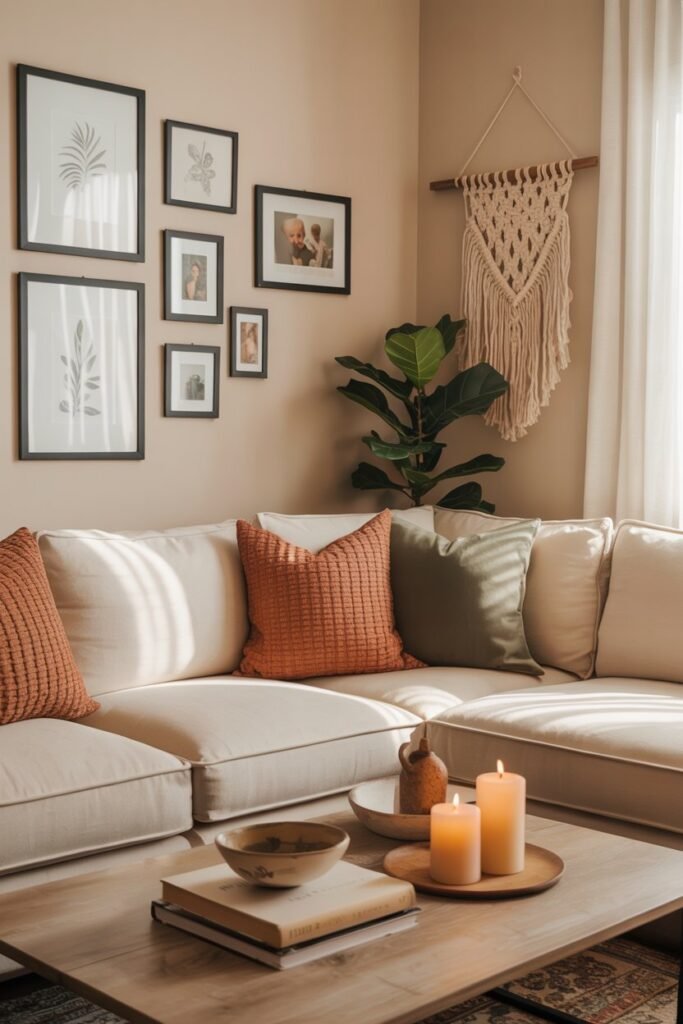
How to Style It
- Layer books and small décor pieces on coffee tables or shelves for a lived-in yet refined feel.
- Use candles, vases, or trays to group accessories neatly.
- Upgrade everyday items — for example, swap generic throw pillows with ones in luxurious-feeling fabrics, even if purchased affordably.
Pro Tips
- Less is more — choose a few high-impact items rather than cluttering the space.
- Incorporate personal touches that feel universal — framed landscape photos or simple, elegant sculptures resonate with many.
- Thrift stores, discount home stores, and DIY hacks can create high-end looks on a budget.
Extra Insight: I transformed a $15 throw pillow cover into a velvet cushion, instantly elevating my sofa. Subtle personal touches like these make everyday items feel luxurious.
8. Creating a Cohesive, Elevated Look — The Art of Quiet Luxury
Finally, the magic of quiet luxury comes from cohesion. Every piece — furniture, lighting, art, plants, and accessories — should feel thoughtfully placed and harmonized. This is what separates a chaotic space from a serene, elegant home.

How to Style It
- Stick to a consistent color palette across furniture, textiles, and accessories.
- Maintain balance between minimalism and warmth — avoid clutter but ensure the space doesn’t feel sterile.
- Group similar textures and finishes to create a polished, intentional look.
Pro Tips
- Take a step back and evaluate your space from the doorway — does it feel curated and calming? Adjust as needed.
- Invest in a few quality anchor pieces like a sofa or coffee table, then fill in with budget-friendly accents.
- Consider the flow between rooms — quiet luxury works best when your home feels harmonious from one space to another.
Extra Insight: In my home, I combined thrifted furniture with a few elevated décor pieces, coordinated colors and textures, and even reused accessories across rooms. The result: a space that feels timeless, luxurious, and cohesive without spending thousands.
FAQ Section
1. What is quiet luxury in home decor?
Quiet luxury focuses on elegance, quality, and timeless style without flashy or ostentatious items. It’s about curated design, high-quality textures, neutral palettes, and subtle sophistication.
2. Can I achieve quiet luxury on a budget?
Absolutely. By mixing budget-friendly pieces with a few elevated accents, layering textures, and focusing on color harmony, you can create a luxurious look without spending a fortune.
3. Which materials are best for quiet luxury?
Opt for natural or realistic-feeling materials like wood, stone, velvet, linen, leather, and ceramics. Even faux materials can work if they look authentic and are thoughtfully placed.
4. How do I make a small space feel luxurious?
Use neutral palettes, clean-lined furniture, layered textures, and carefully chosen lighting. Keeping clutter minimal and accenting with plants or artwork can make even a small space feel elegant.
5. How often should I update quiet luxury decor?
Subtle refreshes every 6–12 months work best — rotate accessories, swap textiles, or add seasonal accents while keeping the core furniture and color scheme consistent.
Conclusion
Achieving quiet luxury on a budget is not only possible but deeply rewarding. Through intentional color choices, layered textures, minimalist furniture, curated accessories, and subtle details, your home can feel sophisticated, calm, and timeless.
From neutral palettes and textured throws to curated artwork and natural greenery, every thoughtful addition enhances your home’s elegance and harmony. The key is curation — each piece should contribute to the overall look without creating clutter or distraction.
By applying these practical styling tips and pro tricks, you can create a space that feels luxurious, serene, and inviting, all while staying budget-conscious. Quiet luxury is ultimately about mindfulness, refinement, and the art of simplicity — making your home a sanctuary that’s both stylish and affordable.

